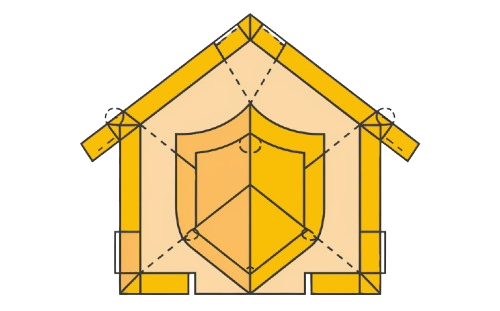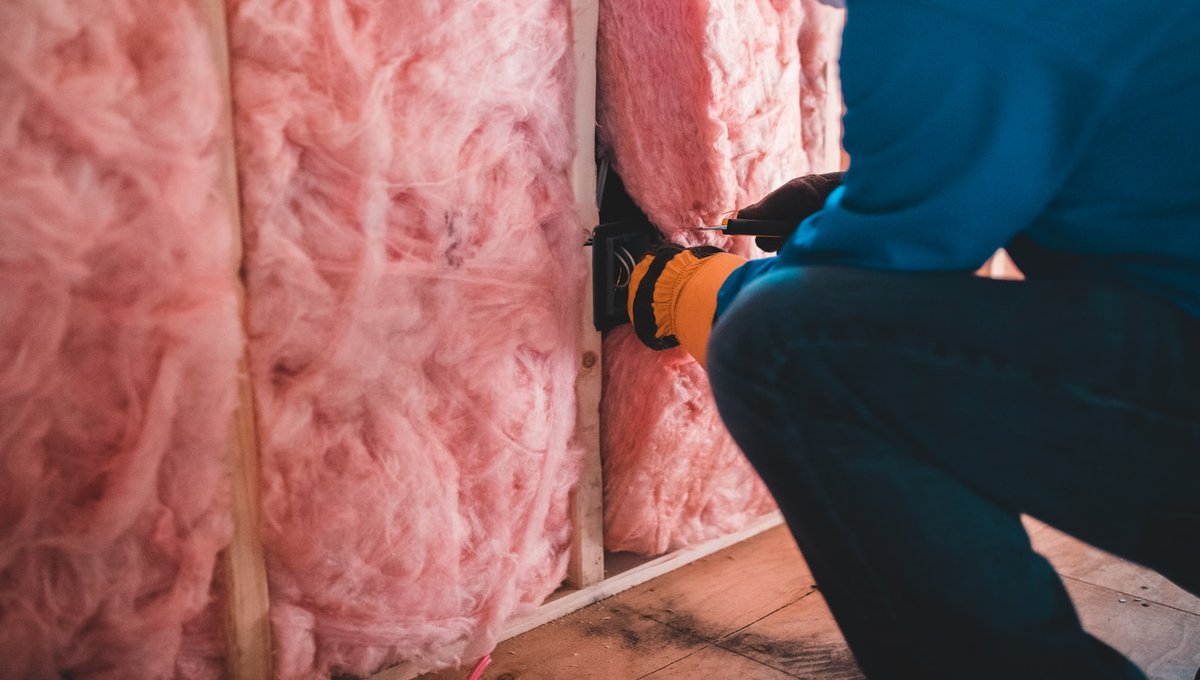When you decide to insulate your basement, the type of insulation you choose does matter. Many homeowners may think batt insulation is the obvious choice because it has a low investment cost and DIY capabilities. If you’re considering a plan to install batt insulation, you’re likely wondering whether to go with faced or unfaced batts. But the choice of which type to use depends on where in your basement you’re insulating.
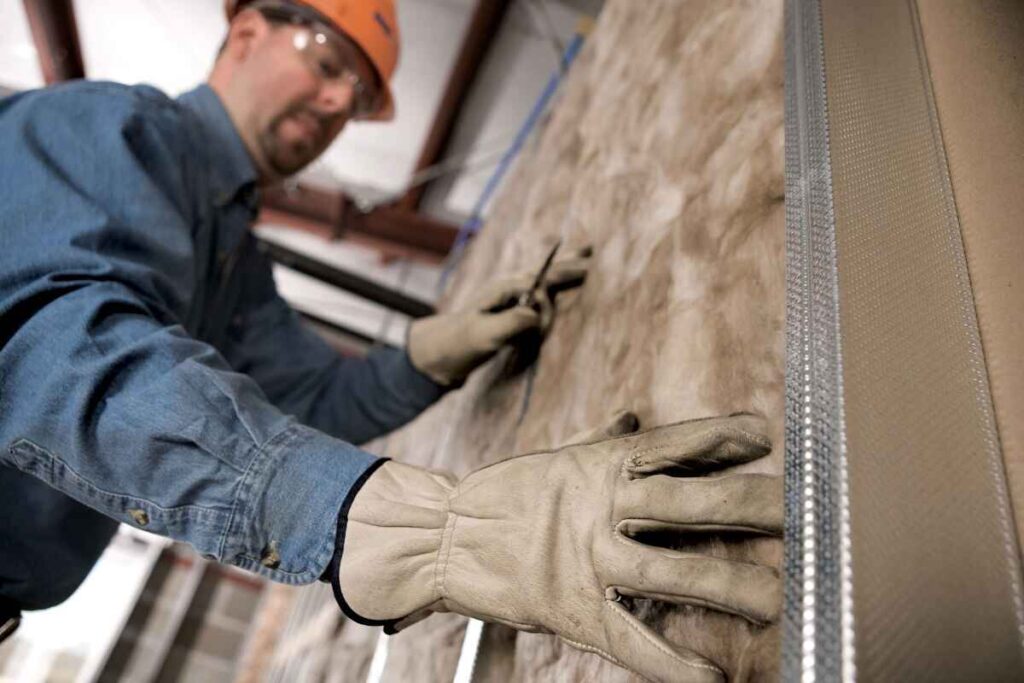
Should You Choose Faced or Unfaced Insulation for Your Basement?
The best basement insulation depends on whether faced or unfaced batts meet your needs. Faced insulation is ideal for walls, providing a vapor barrier to block moisture. On the other hand, unfaced batts are better for ceilings, where vapor protection is less critical.
Many homeowners may prefer batt insulation because it has a low investment cost and is DIY-friendly. However, the choice of faced or unfaced insulation does matter depending on where in the basement you’re insulating. Walls typically benefit from faced batts, while unfaced batts are more common for ceilings.
What’s the Key Difference Between Faced and Unfaced Insulation?
When choosing insulation for your basement, it’s important to know the critical difference between faced and unfaced options. Faced insulation comes with a vapor barrier, which acts as a defense against moisture. The facing can be paper or plastic and is designed to prevent moisture absorption into your walls or ceilings. Fiberglass insulation has no natural defense on its own, so adding a barrier helps reduce the risk of mold and mildew. For areas with high humidity, such as basements or attics, a kraft-faced product is a better choice to prevent vapor transfer.
Unfaced insulation is typically less expensive and more common for areas that don’t need vapor protection. It’s easier to install in exterior walls or ceiling cavities, where moisture isn’t a major concern. If installed correctly, it can fit snug inside the wall cavity and won’t require additional support. However, in areas where moisture can build up, faced insulation is more effective, even if it slightly increases the cost. You can use a staple gun to hold the insulation in place and make sure it doesn’t become compressed, as that can reduce its effectiveness.
What Types of Fiberglass Insulation Are Available?
When it comes to insulation, fiberglass is the main product that is sold with facings. You’re likely thinking of batts, but faced and unfaced products also include blankets or roll insulation. These products are versatile and can be used in different areas of the home. For insulating basement ceilings, unfaced batts are more suitable, while faced fiberglass batts work best for walls. Blankets are a better option for larger areas as they reduce seams and gaps that might let in air.
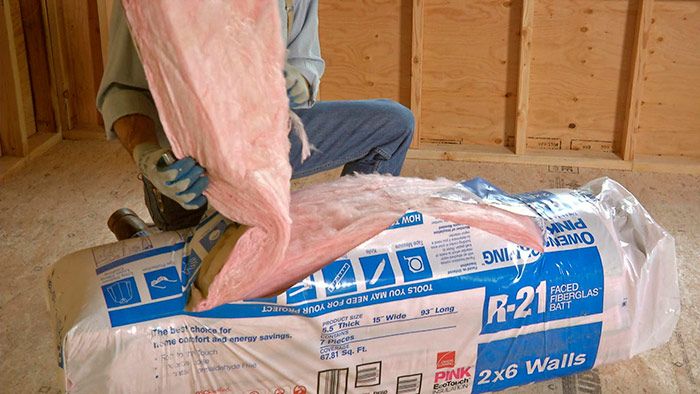
Where Can You Use Fiberglass Batts in Your Basement?
Fiberglass batts are a practical option for insulating basement walls and ceilings, but their nature requires them to be placed inside cavities for the best results. In a finished basement, batts can be installed in a wood frame wall constructed in front of masonry walls. For the ceiling, the batts can be stuffed in place whether the space is finished or unfinished. The key is to ensure they fit snugly to prevent gaps that could let in cold air. Batts are versatile, but they must be properly installed to work effectively.
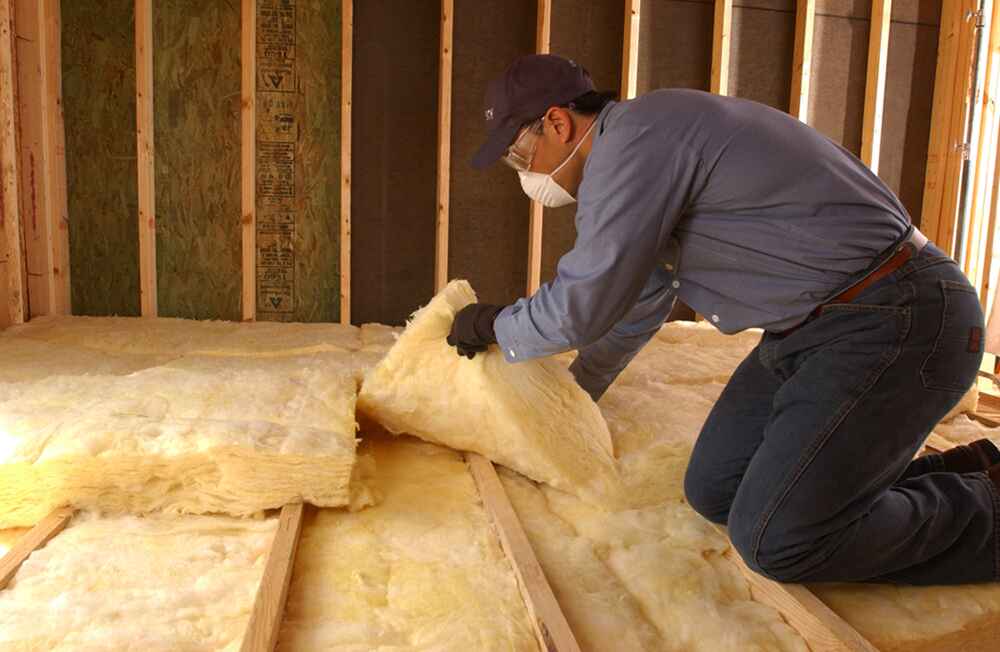
Where Are Fiberglass Blankets Best Used in a Basement?
Fiberglass blankets are a great insulation choice for basement walls, especially if you need to cover larger areas with fewer seams. These blankets are much larger than batts, meaning they provide a smoother application and better coverage. They can be fastened directly to masonry walls, making them a practical option for both finished and unfinished basements. Unlike batt insulation, blankets are more effective at reducing gaps that let in air or moisture, ensuring a tighter fit in your basement wall setup.
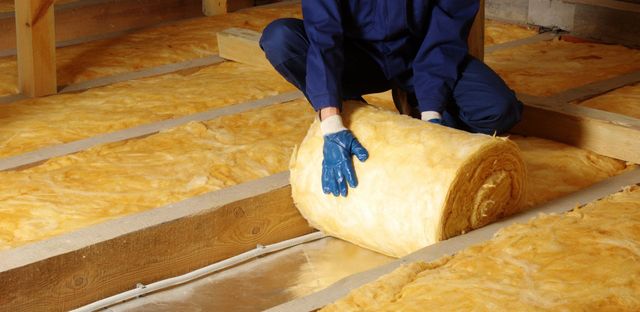
What Should You Consider When Insulating Basement Walls?
Basement walls are made of concrete or stone, both porous materials that easily absorb moisture and release it again. This higher vapor transmission makes faced insulation an ideal choice to reduce condensation risks and prevent mold buildup. A vapor retarder facing creates a protective layer between the insulation and the living space, helping to avoid moisture problems. You could use either fiberglass batts or blankets, but between these two options, blankets are always recommended because they cover larger areas with fewer seams, reducing places where vapor could infiltrate.
If you choose unfaced insulation, it may not provide the same performance for basement walls that have a greater likelihood of moisture exposure. To avoid risks, opt for a faced type, especially in areas where moisture can be a problem. The right choice depends on your building components, but for basement insulation, a vapor barrier is often essential.
Should You Use Faced or Unfaced Fiberglass for Basement Ceilings?
When insulating basement ceilings, it’s important to know that they don’t have direct contact with vapor, which makes vapor retardant facings unnecessary. In most cases, unfaced fiberglass batts are a better fit for your ceiling, as they are easy to install and help reduce condensation risks. However, if you’ve already made a purchase of faced insulation, you can still use it as long as the facing is directed toward the living space.
Using a vapor retarder facing on basement ceilings isn’t always required unless you’re dealing with specific moisture issues. The key is to choose the right type of fiberglass insulation based on the room’s condition. Whether faced or unfaced, ensuring proper installation is critical to prevent condensation and maximize insulation performance.
Is Faced or Unfaced Insulation Better for Your Basement?
When deciding between faced and unfaced insulation, it’s important to consider your basement setup and moisture levels. Fiberglass insulation is commonly used for walls and ceilings, but choosing the right type can make a big difference in preventing condensation risks. Faced batts come with a vapor retarder facing that helps reduce moisture and protect your walls, but they can sag over time and leave gaps that let in cold air. Unfaced insulation is better for areas where vapor protection isn’t needed, but it requires an airtight seal to work effectively.
For better long-term performance, many experts recommend closed cell spray foam over fiberglass products. Spray-applied foam creates a seamless barrier on masonry walls and eliminates condensation risks by filling all cavities without leaving gaps. While closed cell spray foam is more costly, it provides the fewest risks and requires less maintenance over the years. However, it’s best to hire a professional contractor for this type of installation to avoid errors.
If you’re planning to insulate on your own, unfaced batts or faced blankets can still be a good option. Just make sure they fit exactly inside the wall cavities to avoid cold spots and sagging issues. For areas like rim joists or band boards, always add an airtight seal to stop cold air from entering your living space.
Final Thoughts About Choosing Faced or Unfaced Basement Insulation
When you’re deciding between faced or unfaced insulation for your basement walls or ceiling, think about the area you’re insulating and the potential moisture risks. Basements are below-grade spaces, meaning they often experience excess vapor, so adding a vapor barrier can help avoid condensation. Faced batt insulation includes a retarder that creates a protective barrier, reducing the risk of moisture buildup in your walls. However, the ceiling doesn’t require facing since it doesn’t come into direct contact with moisture.
If you’ve already purchased faced insulation, you can install it in your basement ceiling, but it’s not a must. In areas like below-grade walls, closed cell spray foam is a great way to ensure condensation risks are eliminated altogether. Choosing the right insulation type based on your basement needs and the spaces you want to protect can make a big difference in preventing moisture issues and improving your home’s comfort.
Contact us today to connect with experienced professionals who will make sure your basement insulation is installed correctly, keeping your home dry, comfortable, and energy-efficient for the long term.
FAQ
Should I Use Faced or Unfaced Insulation in My Basement?
If your basement is in a colder climate or prone to moisture, faced insulation is recommended to help prevent mold and reduce moisture risks. In warmer areas or spaces without vapor concerns, unfaced insulation can also be used.
Which Way Should Insulation Face in Basement?
When installing faced insulation in your basement walls, the facing should always point toward the interior or heated space to keep the room warm and dry. For example, in exterior walls, the facing must touch the drywall. In attics, the facing should point down toward the ceiling below to prevent moisture buildup.
What Type of Insulation Should Be Used in a Basement?
Common types of insulation for a basement include batt or blanket insulation, glass fibre loose fill, rigid plastic board, and polyurethane spray foam. The type you use depends on whether the basement is interior or exterior and should be chosen based on moisture levels and energy efficiency needs.
Does Basement Insulation Need a Vapor Barrier?
Yes, a vapor barrier is important to keep your basement dry and comfortable. It helps prevent mold and mildew growth by blocking moisture from the ground. Waterproofing systems can eliminate musty smells and provide proper control to avoid future issues with insulation.
